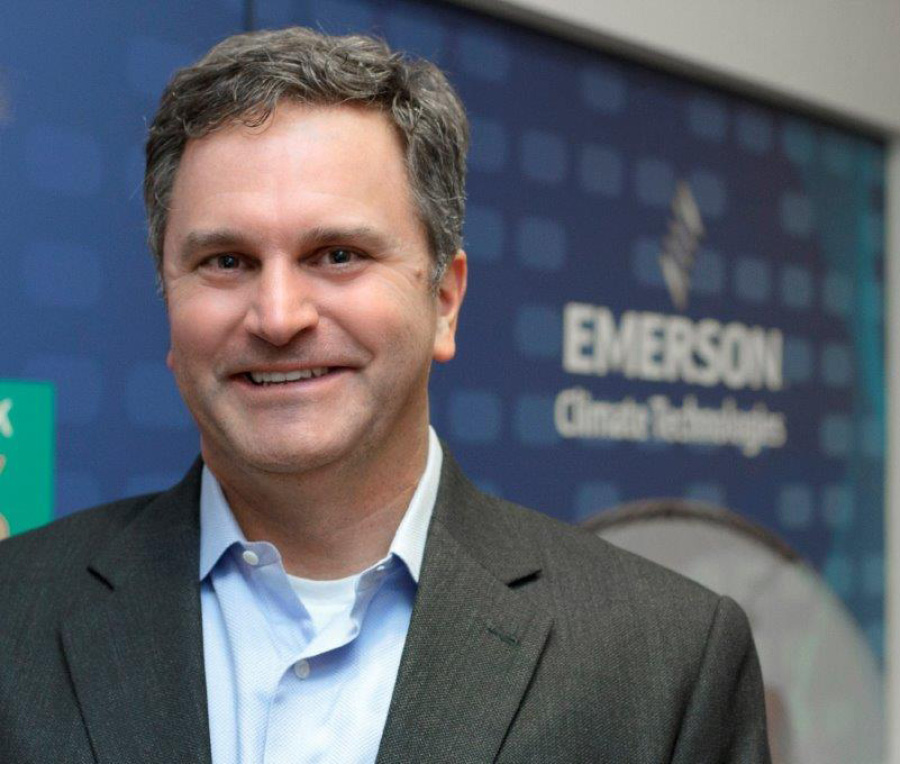Jabian Conversations

What does Retail Solutions do?
The Emerson Retail Solutions business started in 1997 when the company decided to expand its offering into innovative solutions to complement Emerson’s well-known refrigeration compressors. This was primarily done through enhanced controls and services, and since 1997, we’ve done seven acquisitions to help augment that growth throughout the cold chain. Our core set of customers are retailers such as convenience stores, restaurants, supermarkets, pharmacies — really anywhere that food needs to be refrigerated. We’ve begun integrating systems and stores to create a single value-added solution for our customers. What we’ve found is that we can gather and interpret significant amounts of data from our systems that we can then turn into insights for our customers on ways they can reduce energy usage or increase efficiency for better overall performance. There’s a lot of talk about big data or the Internet of things, and we’ve really taken that to the topics of sustainability and energy management. We’re able to provide actionable insights where energy is being consumed in excess or there are opportunities to optimize performance.
What else is Retail Solutions doing?
We’re invested in refrigerated ocean shipping and monitoring how food and goods get transported efficiently. Our solutions allow transport to be done with less waste and higher quality of the product. Monitoring has been done for some time, but in the past, it’s been done via wireline. That’s not so restrictive when you’re out at sea, but it is in the times of transition and the various other places that the container may be that needs tracking and monitoring. We’ve devised ways to integrate wireless monitoring and two-way communication whether you’re at sea or in port. For example, a refrigerated container, before it goes into service, traditionally goes through a pre-trip inspection. This can take hours based on the number of containers. If you have remote connectivity, you can potentially skip the inspection because the system will tell you its recent history. If certain containers aren’t going to be used as heavily, you can remotely set them into energy-savings mode. This saves significant time and resources and allows the containers to move through the port more quickly, making everyone happier.
Keep things simple. If you can’t easily explain what you’re trying to do, then it’s hard to align around a strategy.
What drives innovation at Emerson?
We’re becoming a different type of technology company. Most people think about new products or materials when they think of innovation. We’re innovating around the context of our products. We’re asking how they’re being used, what systems do they influence, and looking at how that can that be influenced. That really is driven by a few things. We put a lot of focus on human-centered design. That’s more than just a design on a screen. There’s a science to how people interact with something, how they extract information. So we focus a lot on that aspect. Really we’re focusing on how to use the data we’re gathering from these products and apply that to how they can be used better. Of course we come up with new products, but a lot of innovation comes through optimizing the ecosystem of how something is being used to either reduce the number of steps, help someone do something faster, or make things simpler for a less technically skilled user.
How do you foster that culture of innovation?
I think it clearly starts at the top. Emerson leadership believes this is important. We’ve done company-wide innovation training and invested in specialists in human-centered design. One of the coolest things we’re doing is building a new innovation center called the Helix, a $35 million innovation center focused on five contextual labs. In that center is a 2,500-square-foot house built inside an environmental chamber. So we can actually see how all our systems interact within multiple environments that we can control. We’ll have a full commercial kitchen with all different types of equipment to see how our controls work within that ecosystem; a mini supermarket, a data center, and the entire building will function as a commercial AC lab. We think this will be the only facility of its kind in the industry, so we’re really excited about it. We intend to invite customers for joint innovation sessions as a learning lab.
What’s driving technical, innovative people to want to work at Emerson?
I think the biggest thing is that you have the opportunity to work on real, practical solutions that aren’t just concepts. Things that you think about and work on are going to be made and sold. People want to see ideas come to life, and we have opportunities to do that. We spent time with AT&T at their Foundry, and when you talk to them, they can point to several projects that came to life and they could see the results in the real world. And that’s what we offer as well. Increasingly, we’re competing with non-traditional companies in our space, such as a Google or others. I think we approach that from different angles. We bring a heavy dose of domain knowledge from the entire ecosystem around our products. A lot of our products or monitoring capabilities come from the millions of hours of testing and really understanding the entire cycle of what makes things work. It takes more than being a good designer to build a world-class solution.
What is the best advice you’ve been given?
Keep things simple. If you can’t easily explain what you’re trying to do, then it’s hard to align around
a strategy.
And the worst advice?
Buying into the notion that “someone else has it covered.” As a leader, you don’t want to micromanage, but you need to know what’s going on. The buck ultimately stops with the leader.
